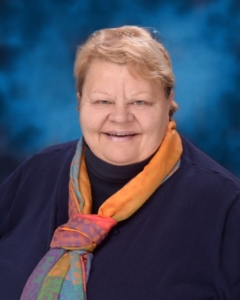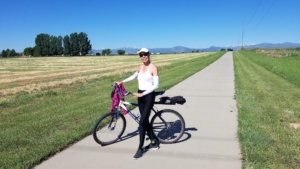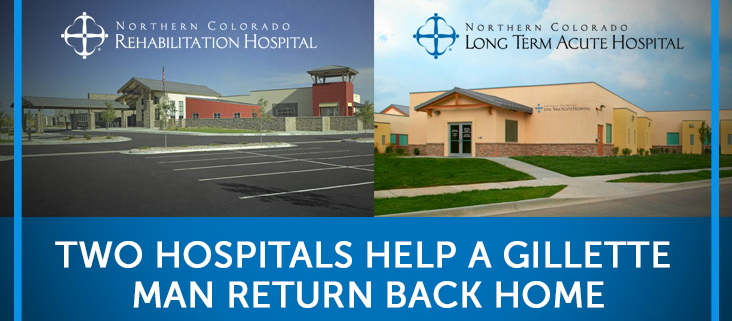Lois Van Mark was enjoying her new job as the State Executive Director of Farm Service Agency. The 62-year-old from Torrington, WY is the fourth generation operating her family’s no-till dry land wheat farm in southeast Goshen County. An art major in college, Lois enjoys painting, drawing and making crafts. But that was all about to be put on hold.
Lois hadn’t been feeling well for about a year when she admitted to the local hospital in Torrington for edema and worsening cellulitis. Worsening acute respiratory failure during her stay required a transfer to Regional West Medical Center in Scottsbluff, NE. Lois now required a ventilator, tracheostomy and feeding tube. For a three-month stretch, Lois doesn’t remember a thing.
That’s when Lois transferred to Northern Colorado Long Term Acute Hospital. Her pulmonologist at Regional West Medical Center and her family felt NCLTAH could provide the best care for Lois.
Lois weaned from the ventilator while at NCLTAH. But the prolonged stretch of unconsciousness, paired with her time on a ventilator left Lois physically weak. Lois would need more rehabilitation to regain her strength. Her family chose to remain close and admit Lois to Northern Colorado Rehabilitation Hospital.
At NCRH, Lois learned how to stand and walk again. “The therapists were so encouraging, patient and always smiling,” Lois recalls. “My recovery was influenced by God, prayers, and family support. Dr. Pearson, Dr. Walker, the nurses and aides were all so helpful!”
“Both Northern Colorado Long Term Acute Care and Northern Colorado Rehabilitation Hospital were wonderful experiences,” Lois adds.
Her rehabilitation complete, Lois discharged home using only a walker. “God has put me on this earth for a reason,” Lois states, “and I take every day as it comes.” Lois is excited to be back at her job and back to painting, drawing and crafts.








